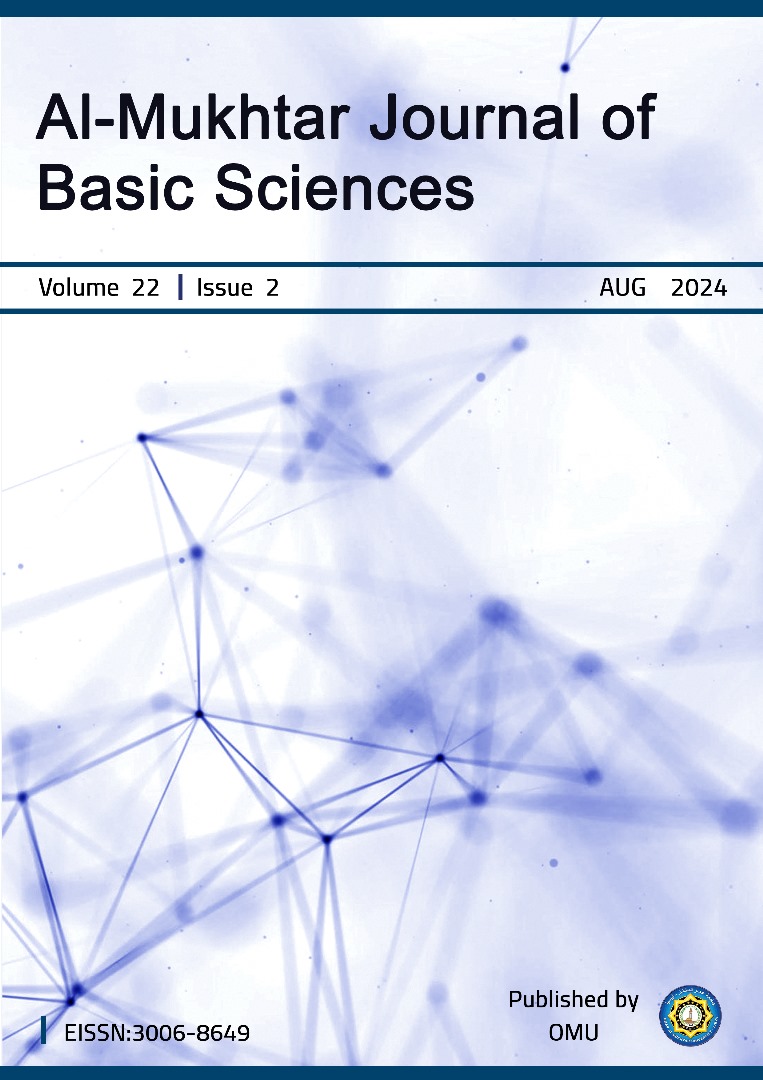Comparison between Green and Chemical Synthesis of Silver Nanoparticles: Characterization and Antibacterial Activit
DOI:
https://doi.org/10.54172/0xd07091Keywords:
Nanoparticles, Green Method, Chemical Method, Antibacterial Activity, Silver NanoparticlesAbstract
Using chemical reduction and green technology, two different approaches are used in the current work to synthesize silver nanoparticles. Pomegranate peel extract has been utilized in green technology applications. Furthermore, In the chemical approach, polyvinylpyrrolidine and ascorbic acid were utilized as reducing agents, and the optical, structural, and antibacterial characteristics of the two versions were investigated. In comparison to the chemical reduction variant (30.38 nm), the particle sizes in the green technique (19.5 nm) were smaller. Comparing green silver nanoparticles to chemically synthesized silver nanoparticles, SEM pictures showed that the former had formed a distinct crystalline shape and were evenly distributed on the surface. Granules constituted the shape of the particles. Additionally, it spreads topically. Whereas the greenly synthesized variant's absorption band was at 280 nm, the chemically synthesized variant's absorption band was at 300 nm. It was demonstrated by spectroscopic data of green silver nanoparticles that they have the capacity to produce and stabilize silver nanoparticles. Chemically produced green silver nanoparticles were also exposed to FTIR analysis to identify active functional groups. Silver particles can also be stabilized by chemically produced silver nanoparticles. To assess the antibacterial activity, the nanoparticle agar diffusion method was employed. The bacteria detected in the medium were Staphylococcus aureus and Escherichia coli. In the green form, the bacterial growth inhibition zone was larger and was produced with varying concentrations of 25 ml, 50 ml, 75 ml, and 100 ml, or 13 ml, 10 ml, 9 ml, and 8 ml for Staphylococcus aureus and 15 ml, 12 ml, 10 ml, and 7 ml for E. coli, respectively. Green-produced transcripts exhibited higher antibacterial responses, which were likely caused by the faster rate of nanoparticle stabilization mechanism by organic compounds found in pomegranate fruit peel extract.
References
Fayaz, A. M., Balaji, K., Girilal, M., Yadav, R., Kalaichelvan, P. T., & Venketesan, R. (2010). Biogenic synthesis of silver nanoparticles and their synergistic effect with antibiotics: a study against gram-positive and gram-negative bacteria. Nanomedicine: Nanotechnology, Biology and Medicine, 6(1), 103-109.
Gupta, A., & Silver, S. (1998). Molecular genetics: silver as a biocide: will resistance become a problem? Nature biotechnology, 16(10), 888-888.
Huang, J., Liu, J., & Wang, J. (2020). Optical properties of biomass-derived nanomaterials for sensing, catalytic, biomedical and environmental applications. TrAC Trends in Analytical Chemistry, 124, 115800.
Ibrahim, D., Abdelghani, K., Anwagy, S., & Rizkallah, R. (2024). Synthesize Iron Oxide and Zinc Oxide Nanoparticles Using Plant Extracts. AlQalam Journal of Medical and Applied Sci-ences, 11-14.
Jadoun, S., Verma, A., & Arif, R. (2020). Modification of textiles via nanomaterials and their applications. Frontiers of textile materials: polymers, nanomaterials, enzymes, and advanced modification techniques, 135-152.
Kalishwaralal, K., Deepak, V., Ramkumarpandian, S., Nellaiah, H., & Sangiliyandi, G. (2008). Extracellular biosynthesis of silver nanoparticles by the culture supernatant of Bacillus licheniformis. Materials letters, 62(29), 4411-4413.
Küünal, S., Kutti, S., Rauwel, P., Guha, M., Wragg, D., & Rauwel, E. (2016). Biocidal properties study of silver nanoparticles used for application in green housing. International Nano Let-ters, 6, 191-197.
Küünal, S., Kutti, S., Rauwel, P., Wragg, D., Hussainova, I., & Rauwel, E. (2016). New methodology for the antifungal testing of surfactant-free silver metal nanoparticles for applications in green housing. Key Engineering Materials, 674, 133-138.
Küünal, S., Rauwel, P., & Rauwel, E. (2018). Plant extract mediated synthesis of nanoparticles Emerging applications of nanoparticles and architecture nanostructures (pp. 411-446): Elsevier.
Liau, S., Read, D., Pugh, W., Furr, J., & Russell, A. (1997). Interaction of silver nitrate with readily identifiable groups: relationship to the antibacterialaction of silver ions. Letters in applied microbiology, 25(4), 279-283.
Nomiya, K., Yoshizawa, A., Tsukagoshi, K., Kasuga, N. C., Hirakawa, S., & Watanabe, J. (2004). Synthesis and structural characterization of silver (I), aluminium (III) and cobalt (II) com-plexes with 4-isopropyltropolone (hinokitiol) showing noteworthy biological activities. Ac-tion of silver (I)-oxygen bonding complexes on the antimicrobial activities. Journal of inorganic biochemistry, 98(1), 46-60.
Rai, M., Ingle, A. P., Birla, S., Yadav, A., & Santos, C. A. D. (2016). Strategic role of selected noble metal nanoparticles in medicine. Critical reviews in microbiology, 42(5), 696-719.
Rauwel, P., Küünal, S., Ferdov, S., & Rauwel, E. (2015). A review on the green synthesis of silver nanoparticles and their morphologies studied via TEM. Advances in Materials Science and Engineering, 2015.
Singh, M., Singh, S., Prasad, S., & Gambhir, I. (2008). Nanotechnology in medicine and antibacterial effect of silver nanoparticles. Digest Journal of Nanomaterials and Biostructures, 3(3), 115-122.
Venhoeven, L. A., Bolderdijk, J. W., & Steg, L. (2016). Why acting environmentally-friendly feels good: Exploring the role of self-image. Frontiers in Psychology, 7, 207070.
Downloads
Published
Issue
Section
License
Copyright (c) 2024 Dalal M. Ibrahim, Hamad M Idris, Hind M. Mohammed (Author)

This work is licensed under a Creative Commons Attribution-NonCommercial 4.0 International License.
Copyright of the articles Published by Al-Mukhtar Journal of Basic Sciences (MJBS) is retained by the author(s), who grant MJBS a license to publish the article. Authors also grant any third party the right to use the article freely as long as its integrity is maintained and its original authors and cite MJSc as the original publisher. Also, they accept the article remains published by the MJBS website (except in the occasion of a retraction of the article).












